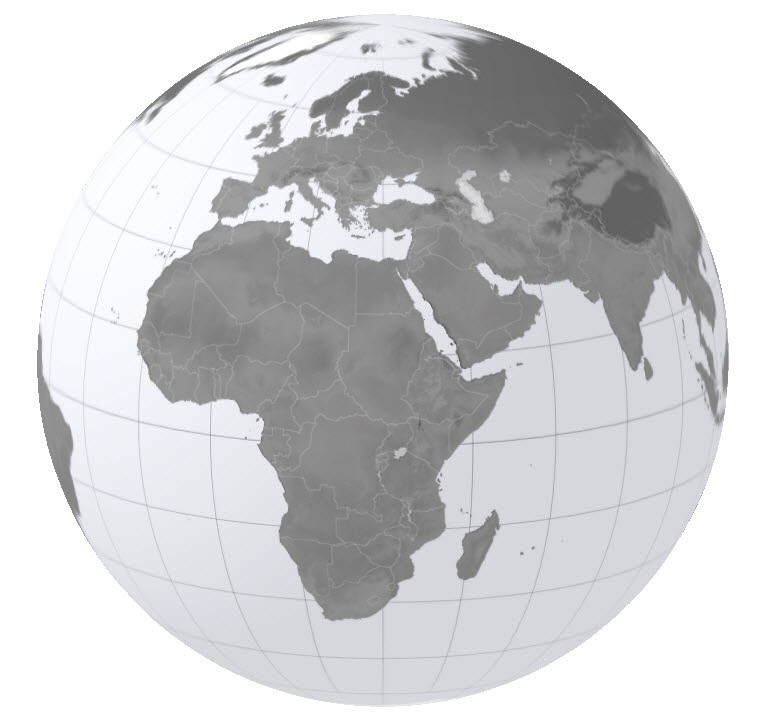Climate migration
143 Million People May Soon Become Climate Migrants
Climate change will drive human migration more than other events, a new report warns. But the worst impacts can be avoided.
National Geographic / World Bank / March 2018
Climate change will transform more than 143 million people into “climate migrants” (#ClimateMigration) escaping crop failure, water scarcity, and sea-level rise, a new World Bank report concludes.
Most of this population shift will take place in Sub-Saharan Africa, South Asia, and Latin America—three “hot spots” that represent 55 percent of the developing world’s populations.
The report, Groundswell—Preparing for Internal Climate Migration, also shifts the focus from cross-border migration, which has drawn global attention as refugees and migrants flee war, poverty and oppression, to in-country migration, which involves many more millions of people on the move in search of viable places to live.
○
America’s Next Great Migrations Are Driven by Climate Change
Via Scientific American
Opinion | By Parag Khanna, Susan Joy Hassol
Parag Khanna is the founder of FutureMap and the author of the new book MOVE: The Forces Uprooting Us. He holds a Ph.D. from the London School of Economics.
Susan Joy Hassol is the director of Climate Communication and recipient of the 2021 Ambassador Award of the American Geophysical Union.
If we want the United States to remain meaningfully united, it may require graduating beyond our antiquated administrative boundaries of states and toward a system of resource zones and the infrastructures within and across them that enable the mobility of people, goods and resources. The new American geography must be governed by the location and conservation of watersheds, as proposed more than a century ago by John Wesley Powell as director of the U.S. Geological Survey.
While there’s no escaping climate change, there are places that are less likely to experience extreme heat, regular flooding and fresh water shortages. The regions projected to become future population magnets need more support today. Those are the places where we need to predesign to sustainably absorb America’s next migration waves. Many American towns are investing in climate resilience, such as Hoboken’s strategy to manage storm surges and collect excess rainwater, and Massachusetts’ grants to communities to replenish streams and promote wildlife.
From Minnesota to New Hampshire, cities and towns are even branding themselves as climate havens. Civic groups such as the American Society of Adaptation Professionals bring together officials and businesses to ensure that gentrification doesn’t worsen existing inequality. In Vermont, The Collective operates a regenerative agriculture commune that welcomes Gulf Coast climate migrants into its solidarity economy...
“Opportunity Zones” to promote investment could focus on rejuvenating the urban districts of Great Lakes towns across Michigan and Ohio, and immigration channels such as the EB-5 program should direct foreign real estate investors not to Louisiana but to Illinois. Detroit was once America’s largest city and could be again.
We can no longer afford to be passive observers of how human geography unfolds. Instead, we must proactively realign our geographies, moving people and technologies where they are needed while keeping livable places habitable and more hospitable. Only then will we bring our human geography, natural resources, industries and borders into better alignment.
Resettling humanity will not be a one-time proposition but an ongoing process that will pit our present political cartography of borders against our will to maximize our survival as a species.
○
- Anthropocene
- Atmospheric Science
- Climate Change
- Climate Migration
- Climate Policy
- Desertification
- Digital Citizen
- Earth Observations
- Earth360
- Earth Science
- Earth Science from Space
- Ecology Studies
- Eco-nomics
- Education
- Energy
- Environmental Laws
- Environmental Protection
- Environmental Security
- Environmental Security, National Security
- Extinction
- Fossil Fuels
- Global Security
- Global Warming
- Green Networking
- Green Politics
- INDC
- NASA
- NOAA
- Natural Resources
- Networking
- New Definitions of National Security
- Ocean Science
- Planet Citizens
- Planet Citizens, Planet Scientists
- Renewable Energy
- Resilience
- Sea-level Rise
- Sea-Level Rise & Mitigation
- Social Justice
- Solar Energy
- Strategic Demands
- Sustainability Policies
- Whole Earth
- World Bank
- Wind Energy
